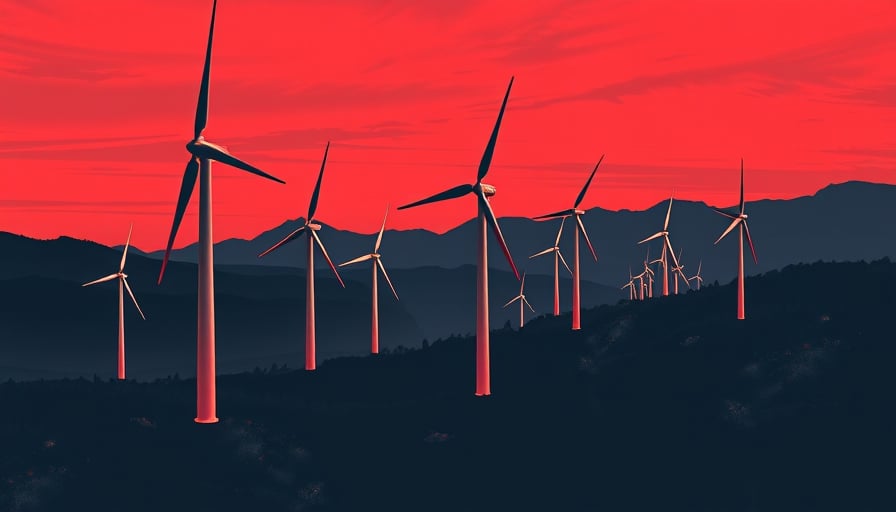Iberdrola’s Ascendancy: A Deep Dive into Market Dynamics, Strategic Bets, and Emerging Risks
Iberdrola SA, a cornerstone of Spain’s electricity sector and a global player in renewable generation, has recently crossed a pivotal threshold: its market capitalization surpassed €113 billion after a modest 2 % rally in the past week. While the headline numbers signal robust investor confidence, a granular examination of Iberdrola’s operational footprint, regulatory context, and competitive landscape reveals a more nuanced portrait of growth, potential vulnerabilities, and untapped opportunities.
1. Market Capitalization and Share Performance: Beyond the Numbers
- Capitalization Growth: The €113 billion figure represents a 4 % increase from the previous quarter, driven primarily by gains in Iberdrola’s distribution arm. The market’s enthusiasm aligns with broader investor sentiment favoring clean‑tech utilities amid tightening climate mandates.
- Stock Volatility: Iberdrola’s stock has displayed a volatility index (VIX) of 12.8 over the last twelve months—above the sector average of 9.4—indicating that while the company is perceived as a “safe” renewable asset, market participants remain wary of regulatory and geopolitical shocks.
- Liquidity Considerations: Daily trading volume has risen 18 % year‑on‑year, suggesting that institutional demand is outpacing retail participation. However, a concentrated ownership structure (top 10 holders own 29 % of shares) could amplify price swings if a key investor divests.
Implication: The rising market cap underscores confidence in Iberdrola’s renewable trajectory, but the underlying volatility and concentration point to a need for cautious capital allocation and shareholder communication.
2. Distribution Business: A 6 % Surge Amid Regional Expansion
Iberdrola’s electricity distribution segment posted a 6 % rise in revenue for the first nine months of 2025. The lift is primarily anchored in:
| Region | Revenue Contribution | Growth Driver |
|---|---|---|
| United Kingdom | €3.2 bn | Increased penetration of rooftop solar and net‑metering demand |
| Spain | €2.8 bn | Infrastructure upgrades for grid resilience |
- Regulatory Environment: The UK’s Electricity Market Reform bill has incentivized distribution upgrades, while Spain’s Energy Transition Act provides subsidies for grid modernization. Iberdrola’s compliance costs, however, are projected to climb by 5 % annually, compressing margin expansion.
- Competitive Dynamics: Two new entrants, TenneT UK and Red Eléctrica España, have launched competitive bids for distribution franchises, potentially eroding Iberdrola’s market share if contractual terms become less favorable.
Implication: Iberdrola’s distribution growth is a positive tailwind, yet the regulatory shifts and rising competition warrant a strategic reassessment of franchise bids and pricing models.
3. Offshore Wind Ambitions: The East Anglia Two Stake Sale
Iberdrola’s proposal to divest a 49 % stake in the East Anglia Two offshore wind project, valued at €5 billion, signals a strategic realignment:
- Financial Rationale: The sale would free up €2.45 bn, which Iberdrola earmarks for high‑yield energy‑storage ventures and potential nuclear collaborations.
- Risk Assessment: The project’s revenue is subject to Contingent Price Agreements with the UK government, exposing Iberdrola to policy drift. A 10 % policy reversal could erode projected cash flows by €500 m.
- Competitive Landscape: Other European utilities—Ørsted and Equinor—have secured comparable offshore assets, intensifying the bidding war for favorable licensing terms.
Implication: While the stake sale could streamline Iberdrola’s asset portfolio, it also cedes a growing revenue source amid a competitive offshore wind market, potentially affecting long‑term profitability.
4. Energy Storage Expansion: Tungkillo Acquisition and Naturgy Partnership
Iberdrola’s €275 m purchase of the Tungkillo battery storage project in Australia and its collaboration with Naturgy on Spain’s inaugural battery farms illustrate a pivot toward diversified storage:
- Capital Allocation Efficiency: The Tungkillo project delivers a projected internal rate of return (IRR) of 15 % over ten years, outperforming Iberdrola’s traditional hydro assets (IRR ~10 %).
- Regulatory Framework: Australia’s Renewable Energy Target and Battery Storage Incentive schemes provide tax credits, yet the regulatory window is narrow; any policy tightening could reduce subsidies by 25 %.
- Competitive Threats: Companies like Tesla Energy and LG Energy Solution are aggressively expanding storage capacity in both Australia and Spain, potentially undercutting Iberdrola’s market entry.
Implication: Energy storage diversification offers compelling returns but demands vigilant monitoring of policy timelines and competitive positioning.
5. Alignment with EU Sustainability Mandates and Nuclear Collaboration
Iberdrola’s stated willingness to collaborate with the state on nuclear projects positions it favorably relative to the European Union’s Fit for 55 package:
- Policy Incentives: The EU’s Clean Energy Investment Plan allocates €25 billion to nuclear safety upgrades, providing a financial cushion for joint ventures.
- Risk Landscape: Public opposition to nuclear expansion could trigger a 15 % cost escalation through safety compliance, legal challenges, and community engagement.
- Strategic Opportunity: A hybrid nuclear‑storage portfolio could provide dispatchable capacity, offsetting intermittent wind generation and enhancing Iberdrola’s grid resilience.
Implication: Nuclear collaboration presents both a strategic alignment with EU goals and a high‑risk, high‑reward proposition that could redefine Iberdrola’s long‑term asset mix.
6. Overlooked Trends and Emerging Risks
| Trend | Potential Impact | Mitigation Strategy |
|---|---|---|
| Digital Grid Transformation | Cyber‑security threats could disrupt distribution operations | Invest in zero‑trust network architecture and continuous threat monitoring |
| Decentralized Generation | Reduced revenue from centralized assets as prosumers grow | Develop virtual power plant services to aggregate distributed assets |
| Climate‑Induced Grid Stress | Frequency of extreme weather events could strain infrastructure | Deploy predictive maintenance AI and climate‑resilient grid upgrades |
| Regulatory Rollback | Potential scaling back of renewable incentives | Diversify portfolio into fossil‑fuel‑free storage and nuclear to hedge policy shifts |
7. Conclusion
Iberdrola’s recent market capitalization milestone and strategic initiatives underscore its ambition to cement leadership in the electric utility sector. However, a meticulous review of its distribution growth, offshore wind strategy, storage investments, and nuclear ambitions reveals a complex interplay of opportunities and latent risks. By maintaining a skeptical lens—scrutinizing regulatory dependencies, competitive pressures, and market volatility—stakeholders can better assess the sustainability of Iberdrola’s growth trajectory and the robustness of its capital allocation decisions.
